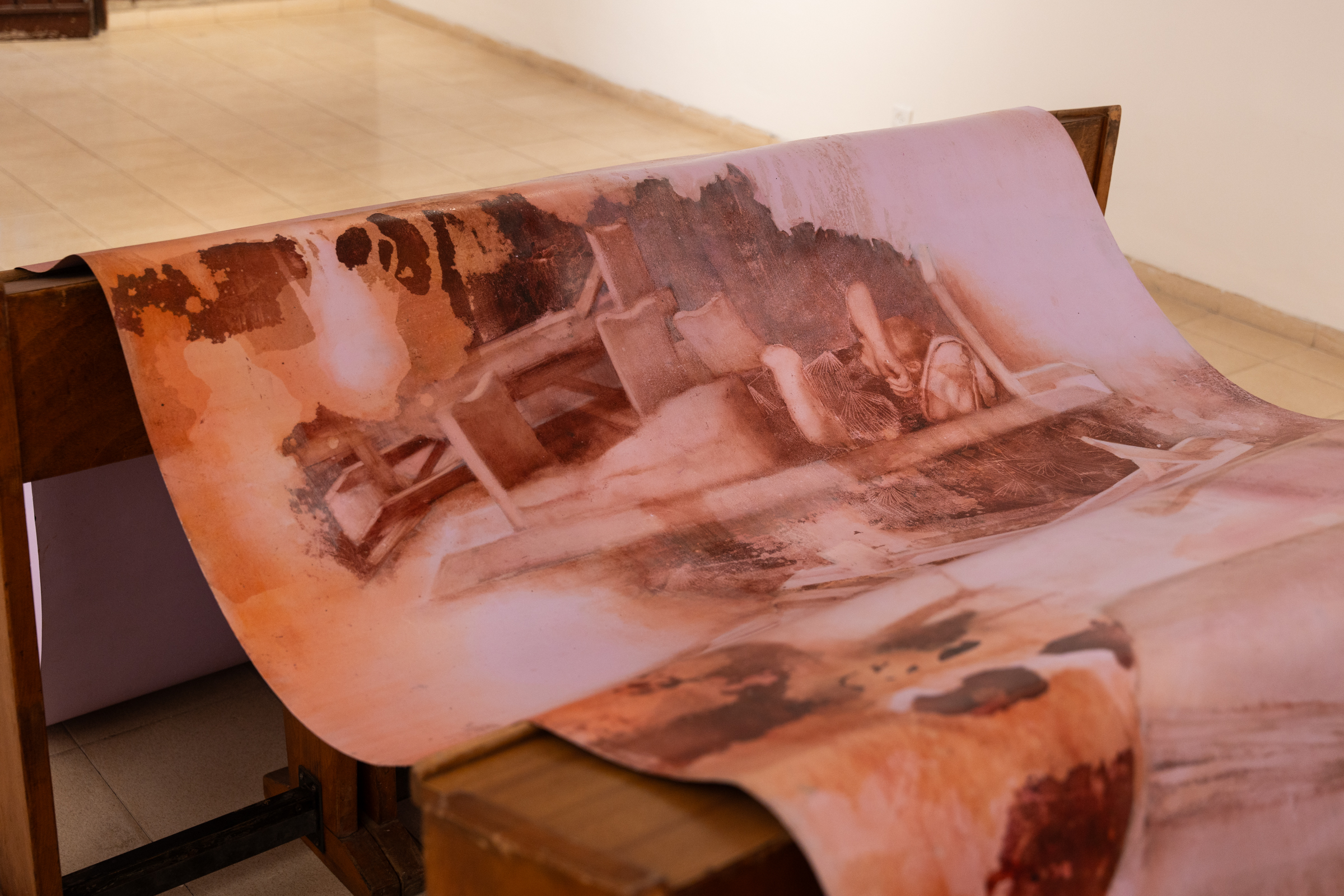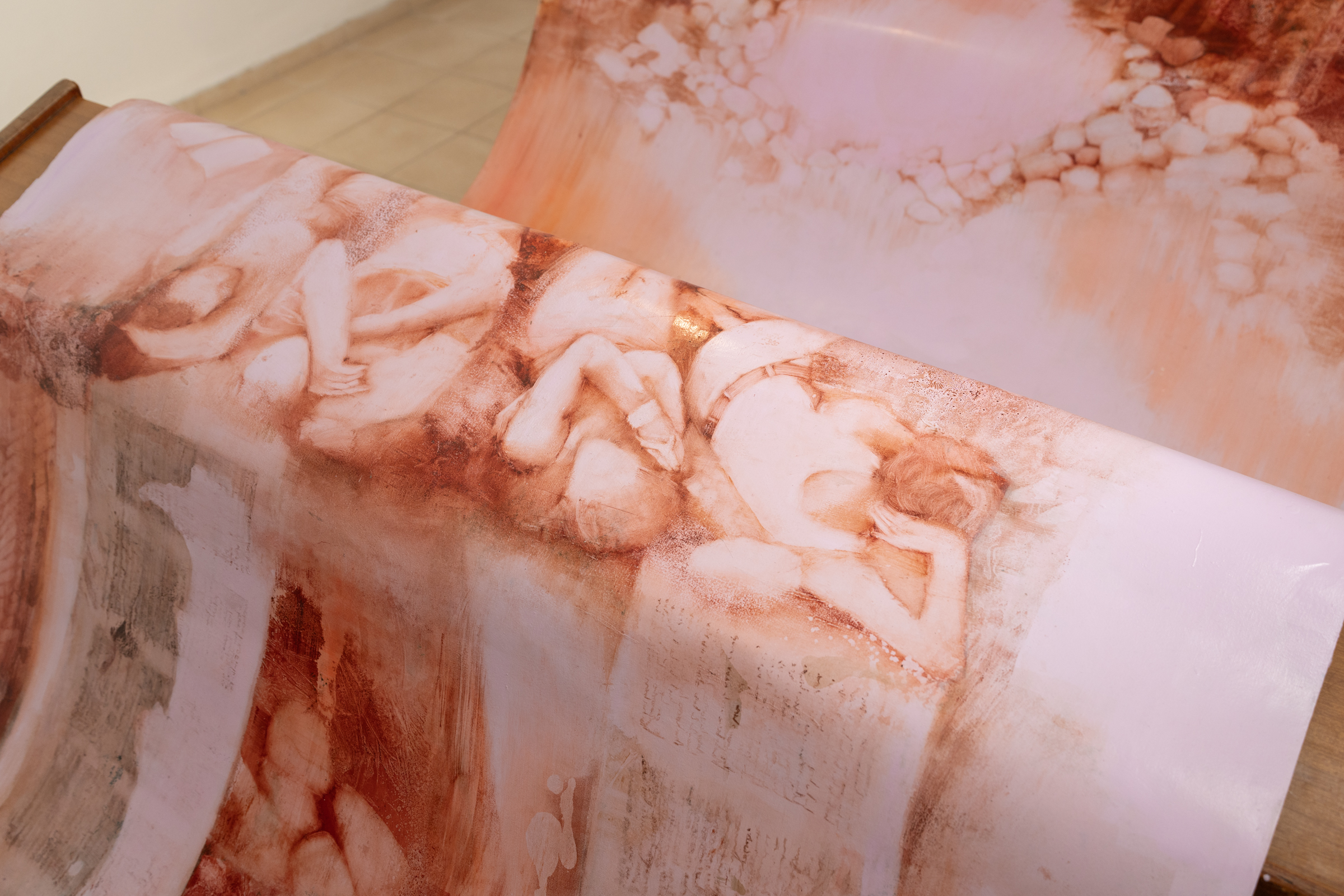

Under The Sign Of Saturn | Israel Willfrid Museum, Kibbutz Hazorea, 2024 | Curator: Shir Meller Yamaguchi
Under The Sign Of Saturn | Israel Willfrid Museum, Kibbutz Hazorea, 2024 | Curator: Shir Meller Yamaguchi
A large painting came down from the gallery's ceiling and covered praying benches taken from a famous educational establishment that was once considered the crowning jewel of the religious Zionism movement (Midrashiyat Noam) and was shut down in the wake of a moral breakdown.
The installation was created for the space that served as Kibbutz Hazorea reading room in the 1950’s.
In the ancient wood cabinets designed by Munio Weinraub, now empty of the books they once held I choose to place inside paintings indicating the dissolution of the socialist ideas on which the kibbutz was founded. The painted images are based on the archive of Kibbutz Hazore and Midrashiyat Noam composing a lamentation about a cultural foundation in a progressive disintegration processes.
Installation Shots: Daniel Chanoch
Details Photgraphy: Cheli Uzevitz
Video documentation: Tomer Fruchter










